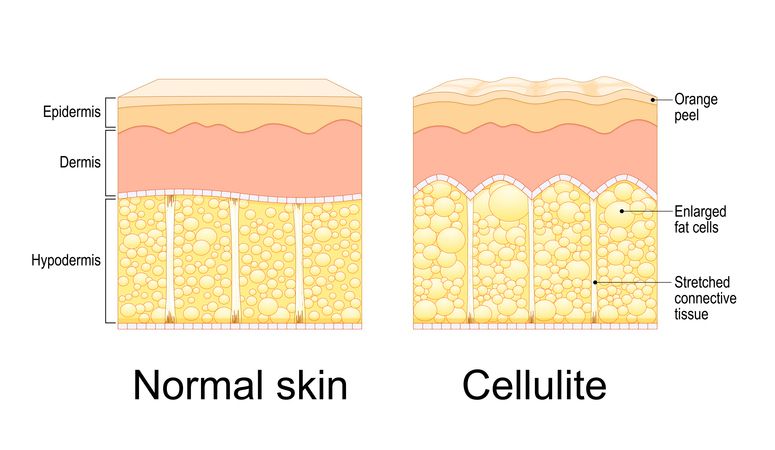Author: Natalie Ng|Updated: 9 May 2025
Ice pick acne scars are one of the most stubborn types of skin scars. These narrow, deep marks form after inflamed acne damages the skin tissue, often leaving behind sharp, pitted holes that don’t fade easily. They’re a type of atrophic acne scar, which means the skin loses volume during the healing process and ends up with small, deep indentations. These are different from rolling scars or boxcar scars, but all of them are caused by severe acne or cystic breakouts that affect the deeper layers of the skin. While surgical options like punch excision or grafting are available, not everyone wants to go down that route. Luckily, there are non-surgical ways to improve the look of ice pick scars. Treatments like chemical peels, collagen induction therapy, dermal fillers, laser resurfacing, and other targeted acne scar treatments can support the skin’s natural healing process. Most of these work by boosting collagen production, remodelling damaged skin, or helping to break down scar tissue. If you're looking to treat acne scars, improve overall skin texture, and support better skin healing without surgery, keep reading. This guide breaks down 10 effective, non-invasive treatments for ice pick acne scars.

Chemical Peels: Revealing Fresh Skin Beneath
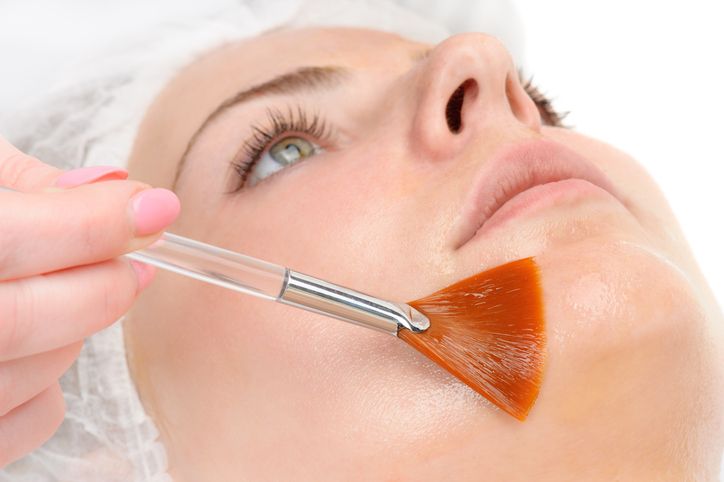
How Chemical Peels Improve Ice Pick Scars
Chemical peels help reduce the appearance of ice pick acne scars by removing damaged layers of skin and encouraging new cell growth. This treatment works by applying an acid-based solution—such as glycolic acid, salicylic acid, or trichloroacetic acid (TCA)—to the skin's surface. These acids exfoliate dead skin cells and trigger controlled injury, which activates the skin's natural healing process.
Targeting Deeper Scars
For deep acne scars like ice pick or other atrophic acne scars, chemical peels help by stimulating collagen production in the deeper layers of skin. This supports the reconstruction of skin scars over time. Deeper peels, such as those using higher concentrations of trichloroacetic acid (commonly used in TCA CROSS), target more severe scarring and can be used specifically for deep ice pick scars.
Results and Aftercare
This method also improves overall skin texture and reduces uneven tone caused by inflammatory acne or past acne lesions. You may need multiple treatments to see noticeable results, especially for pitted acne scars or deep scars caused by cystic acne.
After treatment, the skin often peels and looks red for a few days. This is part of the healing process. It’s important to protect the treated area from the sun and follow basic skincare steps to support healing and reduce the risk of further irritation.
Chemical peels are suitable for many skin types, but your provider will recommend the right peel strength based on the depth of your ice pick scars and your skin type.

Professional Microneedling Treatments
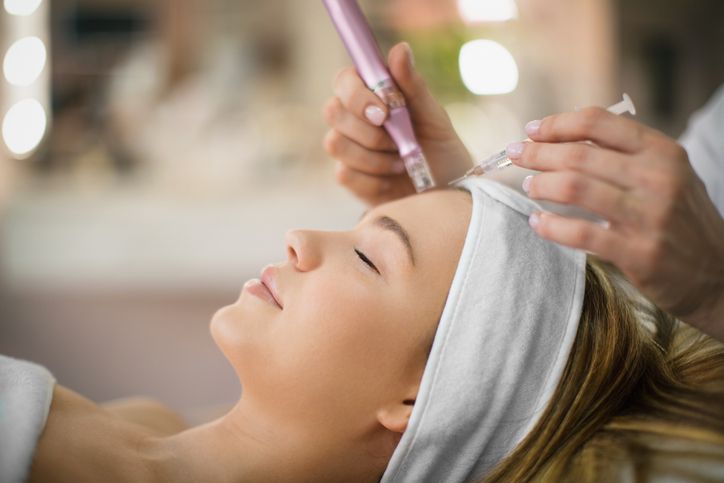
How Microneedling Works
Microneedling uses a handheld device with fine needles to create small, controlled injuries in the skin’s surface. These micro-injuries reach the deeper layers of skin and trigger the body’s natural healing process. This leads to increased collagen production, which helps improve the appearance of ice pick acne scars, atrophic scars, and other types of pitted acne scars. The goal is to gradually smooth the skin and remodel the scar tissue without removing healthy surrounding skin.
This treatment is particularly helpful for deep scars because it works below the skin’s surface, where scar tissue forms. The process is often referred to as collagen induction therapy, and it can improve both skin texture and skin quality over time.
Treatment Sessions and Recovery
Each session starts with cleansing the skin and applying a numbing cream to reduce discomfort. Your provider then uses the microneedling device across the treated area, creating tiny punctures that feel similar to a light prickling sensation. After treatment, your skin may look red and slightly swollen, similar to a mild sunburn. These side effects typically fade within 24 to 72 hours.
To support the healing process, you’ll need to avoid sun exposure, sweating, and active skincare ingredients like acids or retinoids for at least 48 hours. Applying gentle, hydrating products is important to help the skin repair. Most people begin to notice early improvements in skin texture within the first few weeks.
Results and Maintenance
Microneedling doesn’t deliver instant results for ice pick scars. Since collagen takes time to build, changes appear gradually. You’ll likely see the most visible improvements after completing a full treatment series. Most patients need 3 to 6 sessions, spaced 4 to 6 weeks apart, depending on the depth of the scars and how the skin responds.
The effects continue to build over several months, with full results often appearing 3 to 6 months after your last session. Improvements can last up to a year, especially with regular maintenance treatments. This approach can reduce the visibility of deep acne scars, including ice pick scars and rolling scars, without damaging the skin’s surface.
Read More
Book Now to Experience
Acne Treatment
1 Minute Self-Registration
Date should not be before minimal date

Retinoid-Based Topical Solutions
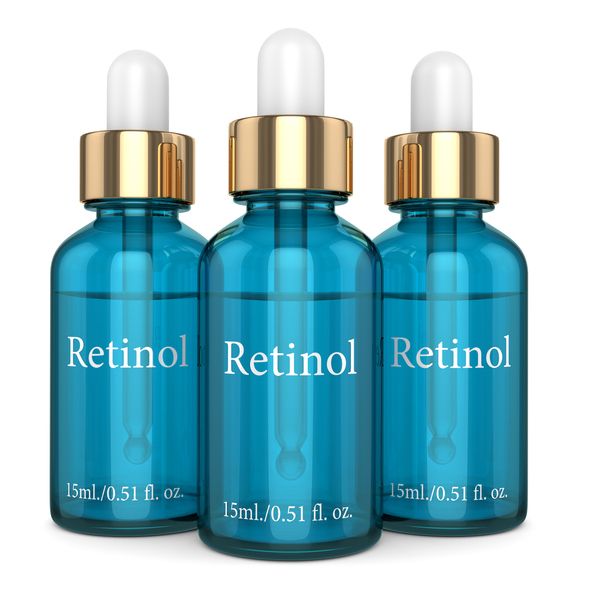
How Retinoids Help Repair Ice Pick Scars
Retinoids are vitamin A derivatives used to treat acne and reduce the appearance of ice pick scars. They work by increasing skin cell turnover and stimulating collagen production in the deeper skin layers. Over time, this can help remodel scar tissue, reduce the visibility of pitted acne scars, and improve the overall skin texture.
These topical treatments are especially effective for early-stage ice pick acne scars and milder atrophic scars. Prescription options like tretinoin are stronger than over-the-counter versions and may deliver faster or more noticeable results for deep ice pick scars. For sensitive skin types, adapalene is often a good starting point.
How to Use Retinoids Effectively
Retinoids should be applied once daily at night. Start with a low concentration to minimize irritation, then increase gradually as your skin adjusts. Apply a pea-sized amount after cleansing and wait for your skin to dry fully before applying it. This reduces the risk of dryness or flaking.
Always use sunscreen in the morning, since retinoids increase sun sensitivity. You should also avoid using other strong actives—like acids or benzoyl peroxide—on the same nights to prevent inflammation or further damage to the surrounding skin.
Timeline and Expected Results
Retinoids work slowly but steadily. Initial results may start to show after 8 to 12 weeks, with deeper changes in collagen production developing over the next several months. For deep acne scars or ice pick scars, it may take 6 months or more of consistent use to notice significant changes.
They’re not a quick fix for scar reduction, but when used regularly, retinoids can reduce the depth and sharpness of narrow scars, soften the surrounding skin, and support long-term improvements in overall skin quality.

Dermal Fillers and Injectables

How Fillers Improve Ice Pick Scars
Dermal fillers work by adding volume beneath the surface of the skin, helping to lift depressed areas caused by ice pick scars. While they don’t remove scar tissue, fillers can temporarily smooth the skin’s surface and reduce the depth of deep acne scars, especially when the scar edges are well-defined and narrow.
This technique is often used for certain atrophic scars, including both ice pick and boxcar scars, where volume loss contributes to the skin’s uneven texture. Although fillers are not a long-term solution for severe scarring, they provide immediate visible improvement, which can last several months depending on the product used.
Types of Fillers Used for Acne Scars
The most common fillers used for acne scar treatment are hyaluronic acid-based and collagen-stimulating fillers. Hyaluronic acid fillers attract water and provide immediate volume, usually lasting 6 to 12 months. Some options can be dissolved if needed, making them a flexible choice.
Collagen-stimulating fillers, such as poly-L-lactic acid, work differently by encouraging your skin to gradually build its own collagen. These results appear more slowly but may last longer—up to 18 months. Your provider may choose the filler type based on your skin type, scar depth, and treatment goals.
Treatment Process and Aftercare
The procedure is quick, often completed in less than 30 minutes. After cleansing the area, your provider will inject small amounts of filler directly under the scar. You might experience mild swelling or bruising for a day or two, but most people can return to normal activities right after treatment.
To maintain results, you’ll need follow-up sessions every 8 to 12 months. Some patients combine fillers with other acne scar treatments like microneedling or laser resurfacing to improve long-term outcomes and support new collagen development in the deeper layers of the skin.
Book Now to Experience
Acne Treatment
1 Minute Self-Registration
Date should not be before minimal date

LED Light Therapy Sessions
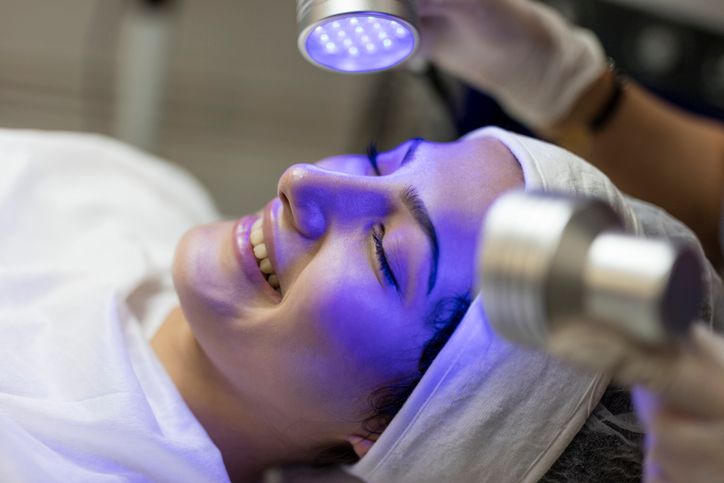
How LED Light Therapy Supports Scar Healing
LED light therapy uses specific wavelengths of light to stimulate skin healing and reduce the appearance of ice pick acne scars. It works without damaging the skin’s surface, making it a safe option for those with sensitive or darker skin types. The treatment targets different layers of skin depending on the light used, helping reduce inflammation, boost collagen production, and improve skin texture over time.
This non-invasive therapy is especially helpful for supporting recovery from inflammatory acne and preventing further damage that can lead to new ice pick scars. It’s often used alongside other treatments to support the healing process and improve overall results.
Different Light Types and Their Effects
Red light penetrates into the deeper skin layers to promote collagen production and reduce inflammation around existing scars. Blue light helps kill acne-causing bacteria on the skin’s surface, which can reduce the chances of developing ice pick scars from new acne lesions. Yellow light targets redness and promotes better circulation, speeding up the healing process of damaged skin.
By combining these different wavelengths, LED therapy addresses both active acne and long-term scar repair.
Treatment Schedule and Experience
Each session lasts around 20 to 30 minutes. During the treatment, you’ll sit or lie comfortably under the LED panel while the light is applied evenly across the face. The treatment is painless and doesn’t require any numbing or recovery time.
For scar reduction, most people need 6 to 12 sessions spaced 1 to 2 weeks apart. Improvements tend to build gradually, especially when used with microneedling, retinoids, or chemical peels.

Natural Remedies and Home Care

Supporting Skin Healing Between Treatments
Natural remedies and consistent home care can support the healing process between professional treatments for ice pick acne scars. While these methods won’t remove deep scars, they help reduce irritation, keep the skin barrier healthy, and improve the appearance of surrounding skin. This can make professional results last longer and help prevent more severe scarring from developing acne.
Gentle, natural exfoliants like diluted lemon juice or honey can promote mild cell turnover, while ingredients like aloe vera or green tea extract can calm inflammation and support skin repair. These treatments are best suited for skin maintenance and are especially helpful for sensitive skin types or those recovering from procedures like microneedling or chemical peels.
Key Ingredients for Scar-Friendly Home Routines
Rosehip oil and jojoba oil are rich in fatty acids and antioxidants that may help soften scar tissue and improve overall skin texture. Vitamin E, often used in creams or capsules, is commonly added to support scar healing, though it should be patch-tested first to avoid potential irritation.
Other helpful ingredients include niacinamide and ceramides, which strengthen the skin barrier and reduce inflammation. Consistent hydration using a gentle, fragrance-free moisturizer helps maintain a healthy environment for scar recovery.
Daily Habits That Protect and Improve Skin
Applying a broad-spectrum sunscreen every morning is essential. UV exposure can worsen scar visibility and slow the healing process, especially after using treatments that increase skin sensitivity like retinoids or exfoliating acids.
Avoid popping pimples or picking at acne lesions, as this increases the risk of developing ice pick scars. Stick to a simple skincare routine with products suited to your skin type, and avoid harsh scrubs or strong active ingredients unless recommended by a professional.
Book Now to Experience
Acne Treatment
1 Minute Self-Registration
Date should not be before minimal date

Essential Skincare Ingredients for Scar Repair
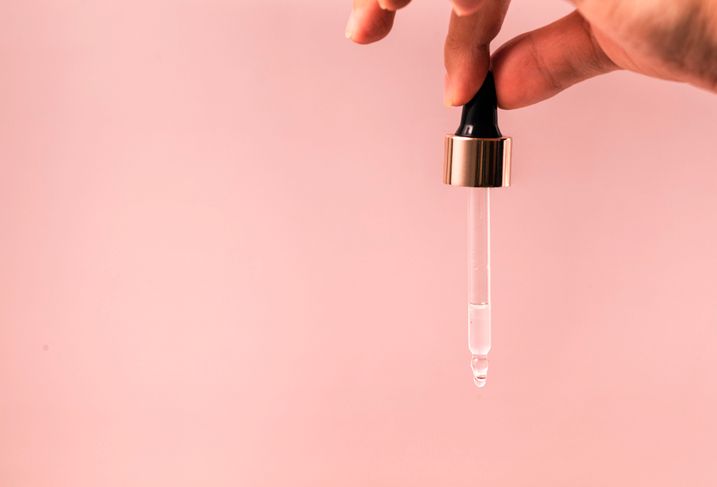
How Ingredients Work Together to Treat Ice Pick Acne Scars
To support your skin’s healing and improve the look of ice pick acne scars, certain ingredients in skincare products can make a real difference. These ingredients help with collagen production, exfoliation, and skin regeneration. When used consistently, they improve the skin’s surface and support deeper layers affected by acne scarring.
Each ingredient works in a specific way, and combining the right ones can help manage different aspects of scar repair—from smoothing rough texture to filling in sunken scars.
Retinoids: Stimulating Collagen in Deep Skin Layers
Retinoids help repair atrophic scars by boosting collagen production and speeding up cell turnover. They’re especially helpful for deep ice pick scars that affect the lower skin layers.
• Prescription options like tretinoin work faster and more effectively than over-the-counter versions
• Start with a low strength to reduce irritation and increase slowly
• Use at night, and pair with sunscreen in the morning to protect sensitive skin
You’ll need to give retinoids time. Most people see clearer texture and softer scar edges after 2 to 3 months of regular use.
Niacinamide and Peptides: Strengthening Skin and Reducing Inflammation
Niacinamide, a form of vitamin B3, helps reduce redness, control oil, and protect the skin barrier. It supports healing and helps smooth out scarred skin without causing irritation.
Peptides are short chains of amino acids that signal your skin to build more collagen and elastin. These proteins improve firmness and structure, helping to fill in depressed scars.
Using products with both niacinamide and peptides can help rebuild weakened skin over time and improve overall skin texture.
Alpha Hydroxy Acids (AHAs): Exfoliating Dead Skin and Revealing Fresh Layers
AHAs remove dead skin cells on the surface and promote new cell growth. This process softens the appearance of pitted acne scars and improves skin tone.
• Glycolic acid is the strongest AHA and works best for thick, damaged skin
• Lactic acid is gentler and helps maintain hydration
• Mandelic acid suits sensitive skin and also has antibacterial effects
Start with low concentrations and use 1–3 times per week. Always wear sunscreen, as AHAs increase sun sensitivity.

Vitamin C and Antioxidant Treatments

How Vitamin C Supports Scar Healing
Vitamin C is a well-researched antioxidant known for its role in collagen synthesis and skin repair. When used regularly, it helps reduce the visibility of ice pick acne scars by encouraging collagen production in the deeper layers of the skin. It also helps improve the tone and texture of the surrounding skin by fading post-inflammatory pigmentation caused by inflamed acne.
Topical vitamin C, especially in the form of L-ascorbic acid, is effective in strengthening skin tissue and protecting it from environmental stress. This makes it a useful addition to scar treatment routines aimed at improving overall skin texture and quality.
Application and Absorption
Vitamin C is usually applied in the morning after cleansing, followed by sunscreen. It’s available in serums with concentrations ranging from 5% to 20%. Lower concentrations may suit sensitive skin types, while higher percentages may show faster results for scar reduction.
To preserve its potency, choose vitamin C products in air-tight, tinted containers, and store them away from heat and light. Consistency is more important than strength—daily use over several weeks supports better results and improves the appearance of both shallow and deep acne scars.
Other Key Antioxidants for Scar Treatment
Antioxidants like vitamin E, niacinamide, and green tea extract complement vitamin C by reducing inflammation and supporting healing. Vitamin E helps moisturize the skin and may reduce scar texture in some people, though it should be patch-tested to avoid irritation. Green tea extract provides anti-inflammatory benefits and helps reduce redness from acne-prone skin.
When used together, these ingredients protect the skin from further damage, support the healing process, and improve the results of treatments like microneedling, chemical peels, or laser resurfacing.
Book Now to Experience
Acne Treatment
1 Minute Self-Registration
Date should not be before minimal date

Professional Dermabrasion Techniques
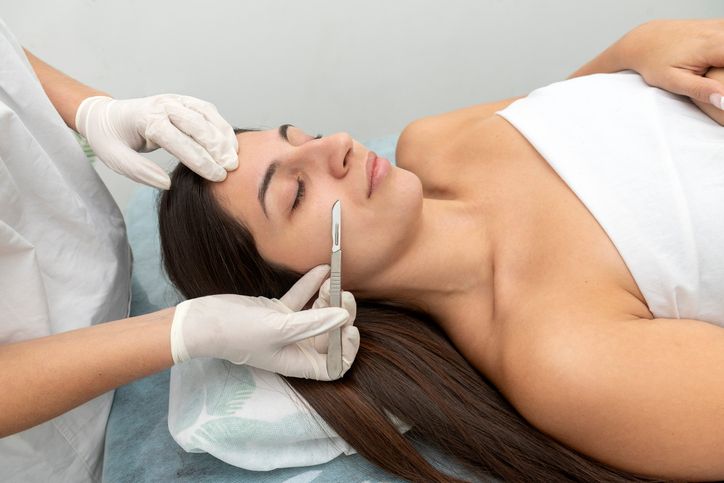
What Dermabrasion Does for Ice Pick Scars
Dermabrasion is a professional procedure that removes the upper layers of the skin using a rapidly rotating device. This method smooths the skin’s surface and helps reduce the appearance of ice pick scars by encouraging new skin growth and collagen formation. It’s a mechanical form of exfoliation that targets deep acne scars, including certain types of narrow, atrophic scars.
The process works best for scars that don’t extend too far into the deeper skin layers. It can also help improve skin texture in areas with multiple pitted acne scars by promoting uniform healing and skin remodelling.
The Procedure and Healing Process
Dermabrasion is typically performed by a dermatologist or skin specialist under local anesthesia. During treatment, the top layers of skin are carefully abraded to remove damaged tissue and trigger the body’s natural healing response. This controlled injury stimulates collagen production and helps reduce the contrast between scar tissue and surrounding skin.
After treatment, the skin will appear red and sensitive for several days to a couple of weeks. You’ll need to follow strict aftercare steps, including avoiding sun exposure and applying protective ointments to support the healing process.
Treatment Frequency and Expected Results
Most patients require more than one session, especially for deep ice pick acne scars. Treatments are spaced several weeks apart to allow the skin to recover and build new collagen between sessions. Over time, this process can reduce the depth and sharpness of the scars, while improving overall skin texture.
The results depend on the depth and age of the scars, the technique used, and your skin’s ability to heal. It may not be suitable for those with darker skin types, as there’s a higher risk of pigmentation changes after treatment.

Acne Treatment to Support Ice Pick Scar Recovery
How This Treatment Helps Ice Pick Scars Heal Better
If you're currently treating ice pick acne scars, combining your routine with a professional acne treatment can help improve results. While microneedling, chemical peels, and laser resurfacing focus on reducing existing scar tissue, this treatment supports the healing environment your skin needs for visible change.
New Beauty’s Acne Treatment is designed for acne-prone skin. It removes dead skin cells, calms inflamed acne, and prevents further breakouts—all of which are essential when working to reduce ice pick scars. Consistent breakouts and clogged pores delay the healing process and lead to more severe scarring. This treatment tackles those problems at the root.
What the Treatment Does
The process starts with a dual spiral suction and drainage system that exfoliates dead skin and clears clogged pores. This reduces acne inflammation and removes the buildup that often leads to future breakouts or worsens existing scars.
Once the skin is cleansed, a hydrating serum is infused deep into the skin layers. This helps calm oil production, rebalance the skin barrier, and stimulate collagen production. Supporting collagen growth is critical for those dealing with atrophic scars like ice pick or boxcar scars, as these forms of scarring result from a loss of volume beneath the skin surface.
Key Benefits for Scar Reduction
• Improves overall skin texture by removing buildup and promoting healing
• Prevents future acne breakouts, reducing the risk of developing new deep acne scars
• Hydrates and calms oily skin, which helps with long-term maintenance of acne-prone areas
• Stimulates collagen, supporting scar remodelling and skin regeneration
• Non-invasive and comfortable, with no downtime or recovery needed
Why It Matters for Your Acne Scar Treatment Plan
When treating ice pick scars, your skin must be stable—free from active breakouts and ready to heal. This treatment can help create those conditions. By reducing inflammation, managing oil production, and supporting the deeper layers of the skin, it sets the stage for better outcomes from other acne scar treatments, microneedling, or laser resurfacing.
Pairing this treatment with a long-term scar reduction plan may improve your skin’s overall healing process and lead to faster, more visible improvements in scar depth and skin quality.
Want to see better results from your acne scar treatments? Book your Acne Treatment session today and take the next step in improving your skin.
New Beauty's Acne TreatmentBook Now to Experience
Acne Treatment
1 Minute Self-Registration
Date should not be before minimal date
FAQ
Can Ice Pick Scars Turn Into Other Types of Acne Scars Over Time?
Studies show that approximately 80% of acne scars maintain their original morphology over time. You won't typically see ice pick scars transform into other types of acne scars, as they're characterized by deep, narrow indentations that extend into the dermis. While the surrounding skin may change due to aging or environmental factors, the fundamental structure of ice pick scars remains stable unless there's additional trauma or inflammation to the area.
How Long Should I Wait After Active Acne Before Starting Scar Treatment?
You should wait at least 3-6 months after your active acne has cleared before starting any scar treatment, as this allows your skin's natural healing process to complete and prevents potential complications. If you're using prescription acne medications, particularly isotretinoin, it's important to wait 6-12 months after completing the treatment before beginning scar therapy, since your skin will be more sensitive and prone to irritation.
Are Ice Pick Scars Hereditary or Influenced by Genetics?
Ice pick scars can be influenced by both genetic and environmental factors, as your genes affect skin healing, collagen production, and inflammatory responses. You'll find that if your parents had severe acne scarring, you're more likely to develop similar scarring patterns. However, genetics aren't the sole determining factor, as your skincare habits, acne severity, and treatment timing also play vital roles in scar formation.
Does Picking at Ice Pick Scars Make Them Permanently Deeper?
Yes, picking at ice pick scars will make them permanently deeper, as this action causes additional trauma to the dermis layer of your skin. When you pick or squeeze these scars, you're creating more inflammation and damage to the collagen fibers, which can lead to further tissue breakdown and deeper scarring. The manipulation can also introduce bacteria, potentially causing infections that worsen the scarring process.
Will Losing Weight or Gaining Weight Affect the Appearance of Scars?
Weight changes can affect the appearance of your scars, as skin elasticity and stretching play a significant role in scar visibility. When you gain weight rapidly, your skin stretches and may make scars appear wider or more prominent, while significant weight loss can cause skin to become loose, potentially making scars more noticeable. You'll find that maintaining a stable, healthy weight helps keep your scars' appearance more consistent over time.
Recommended Articles
COPYRIGHT© NEW BEAUTY MANAGEMENT LIMITED 2025. ALL RIGHT RESERVED.

